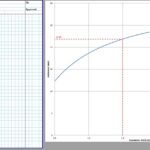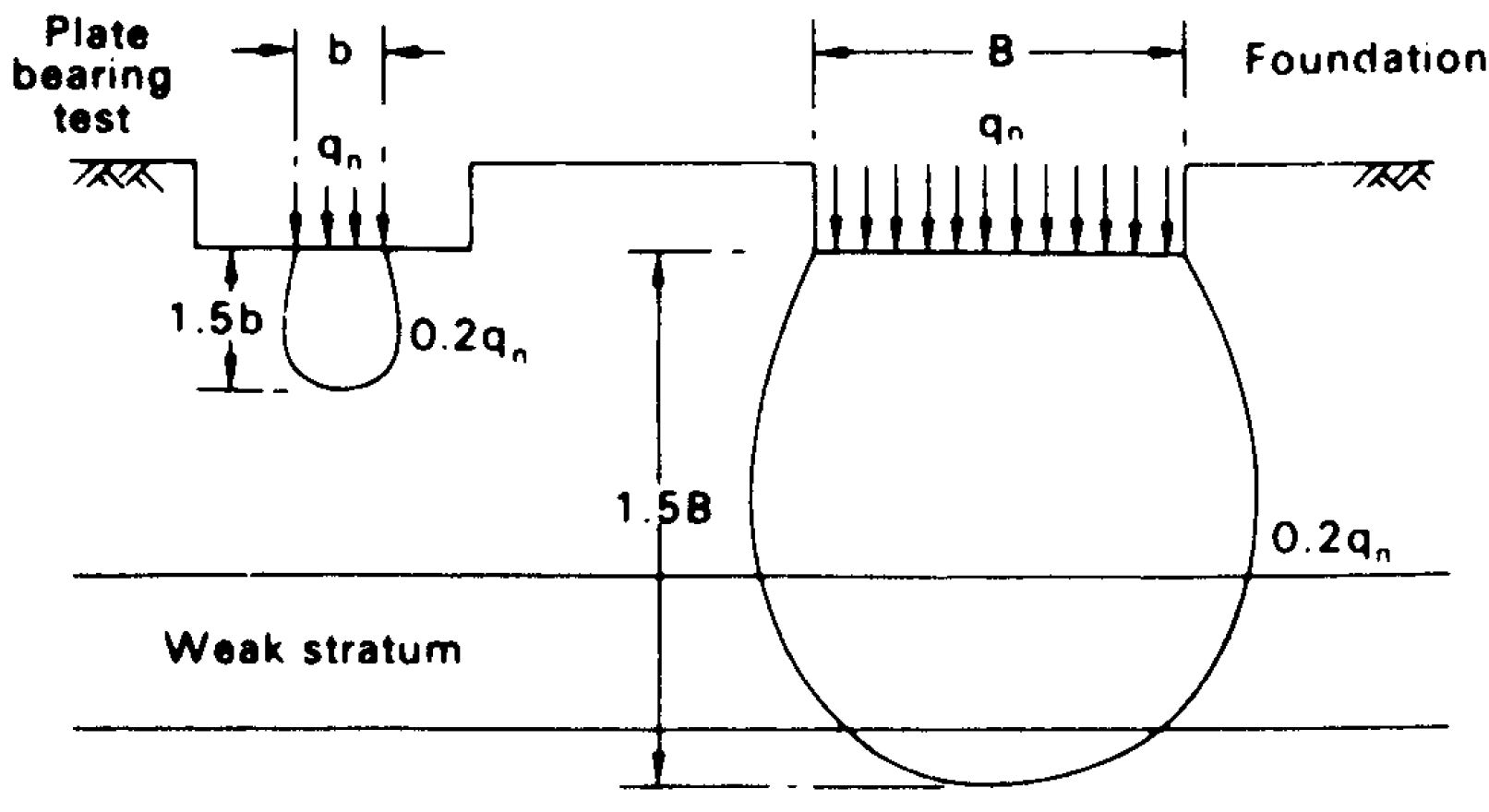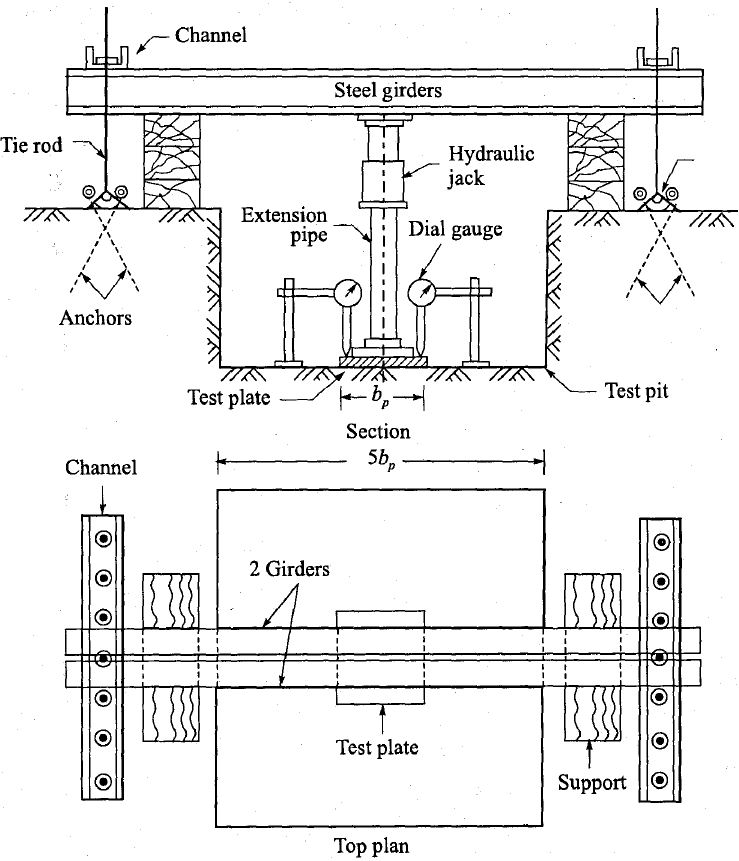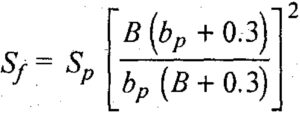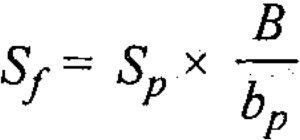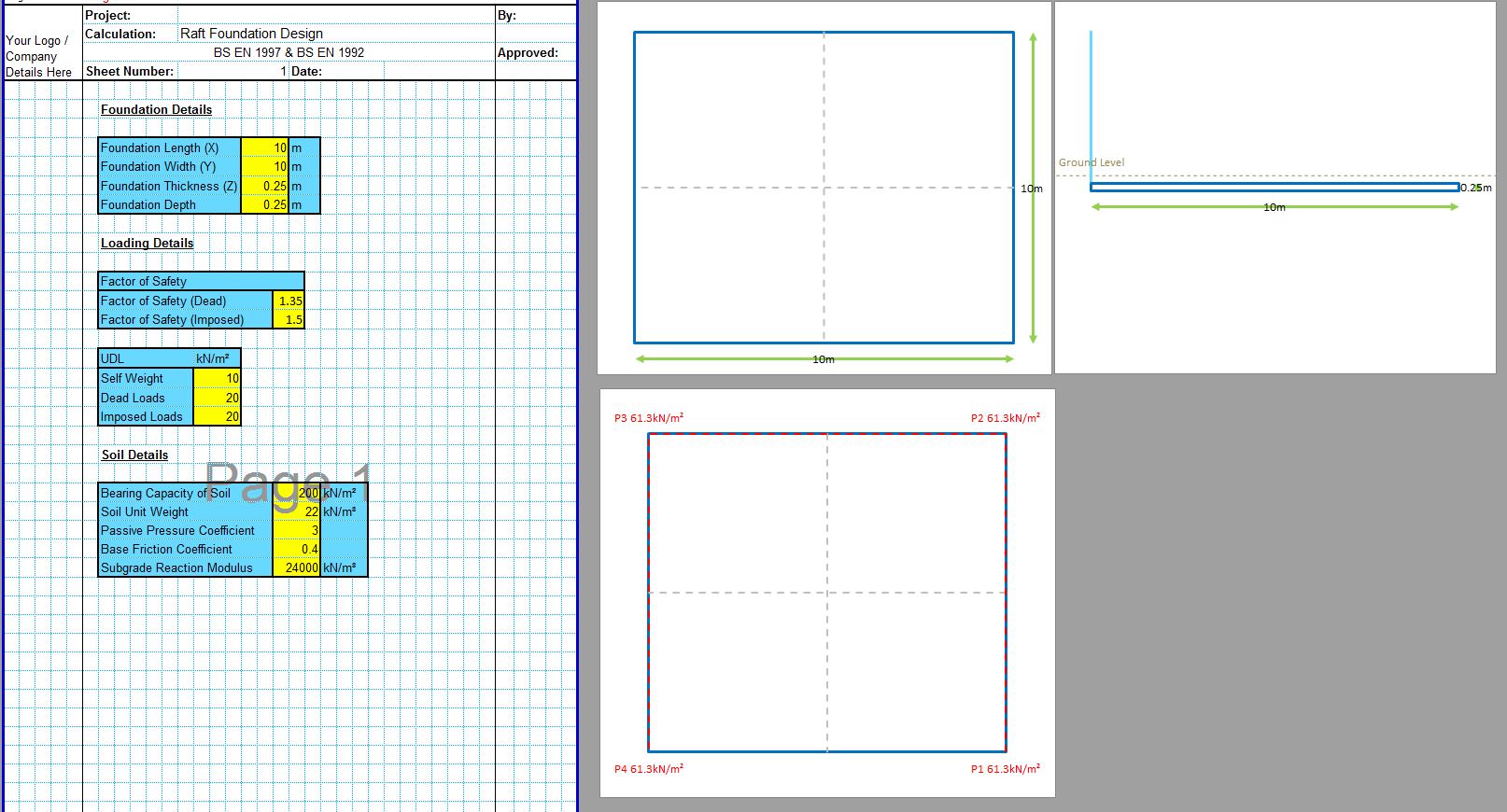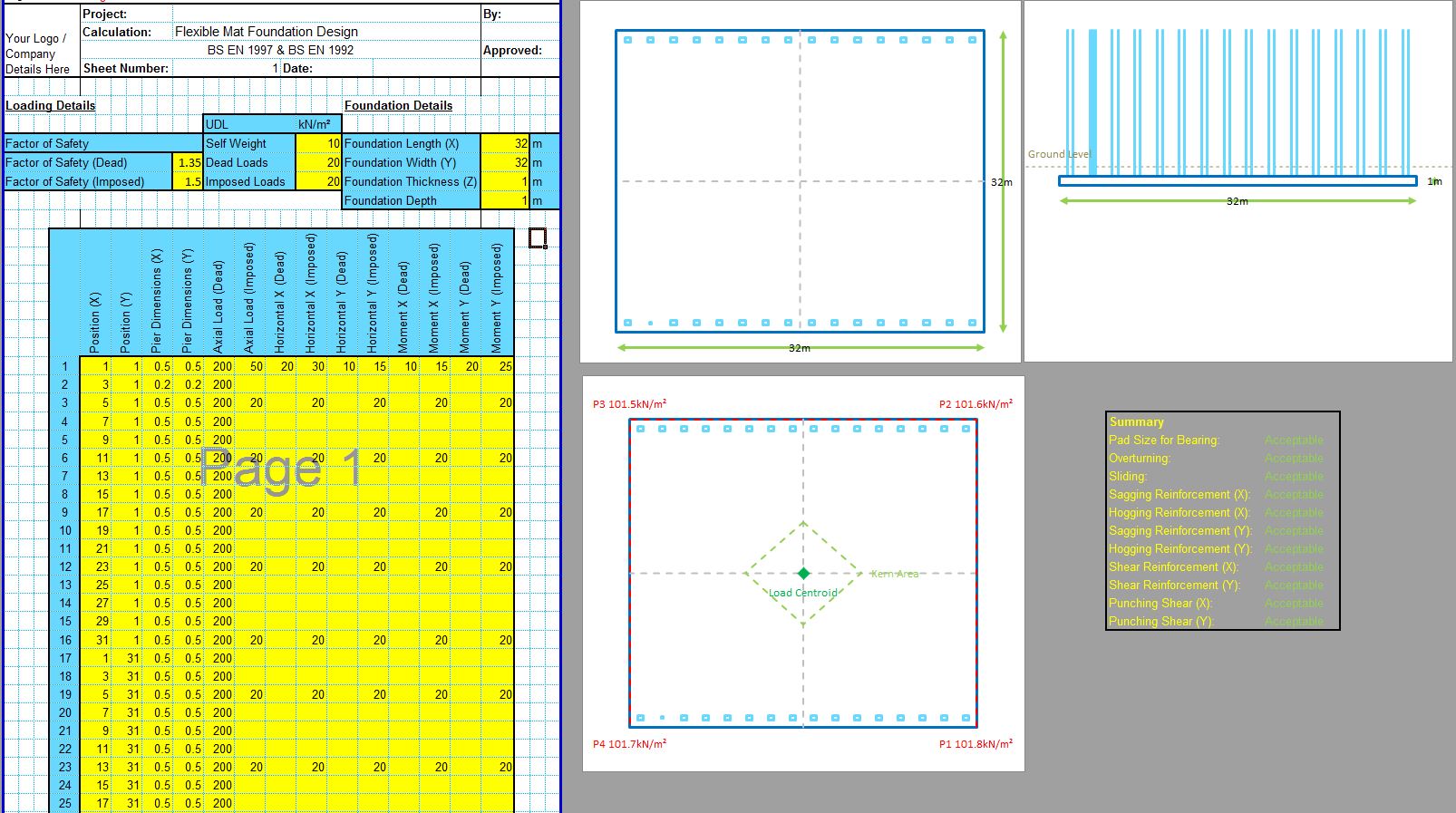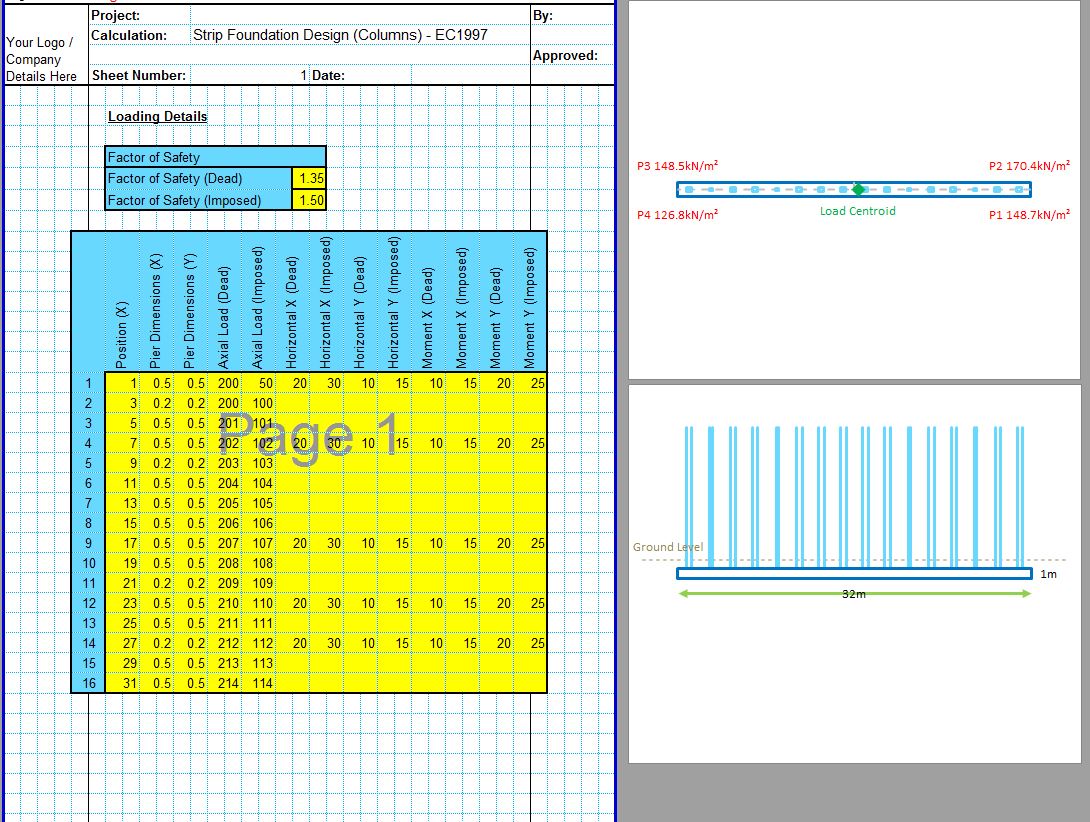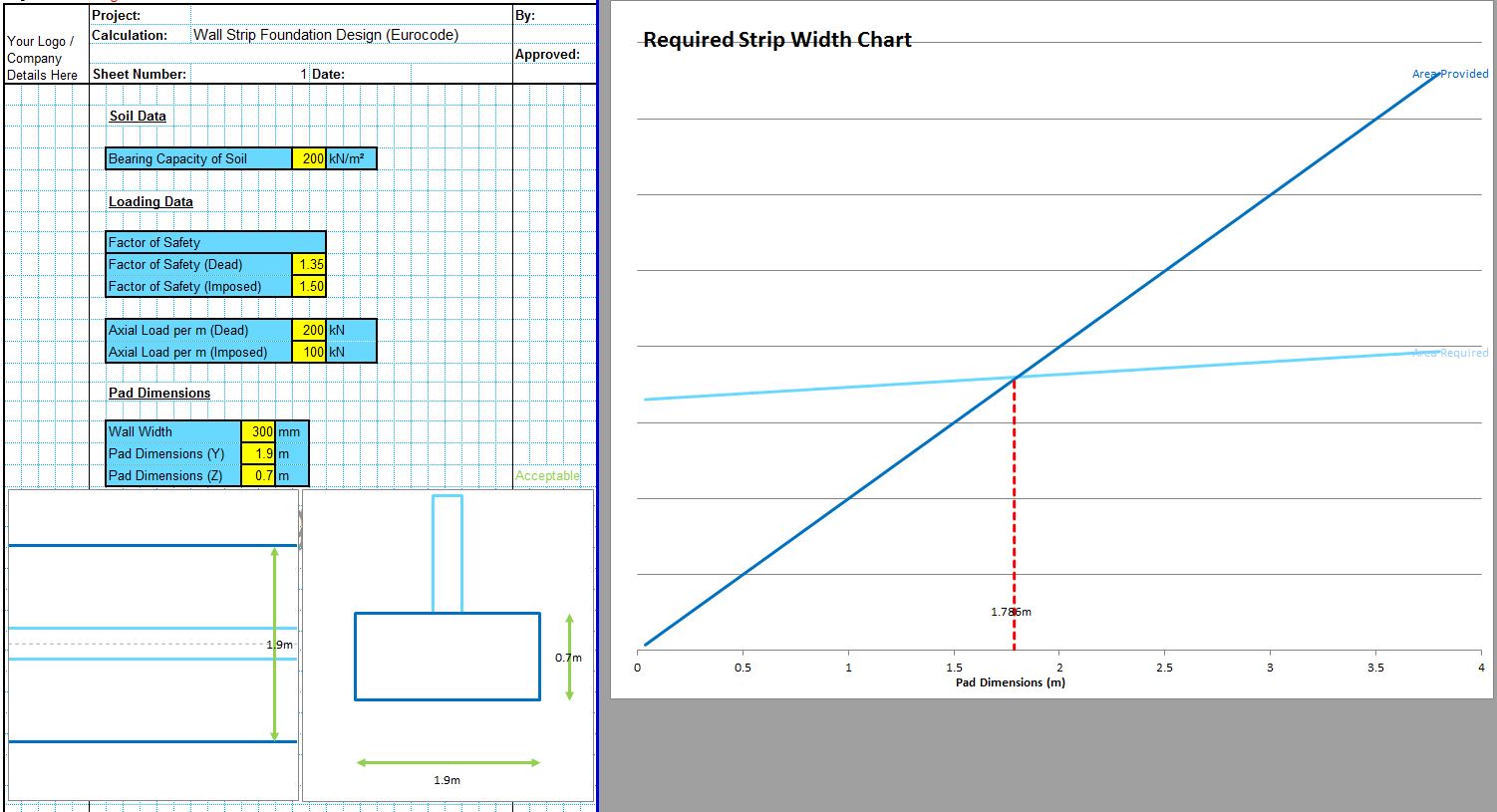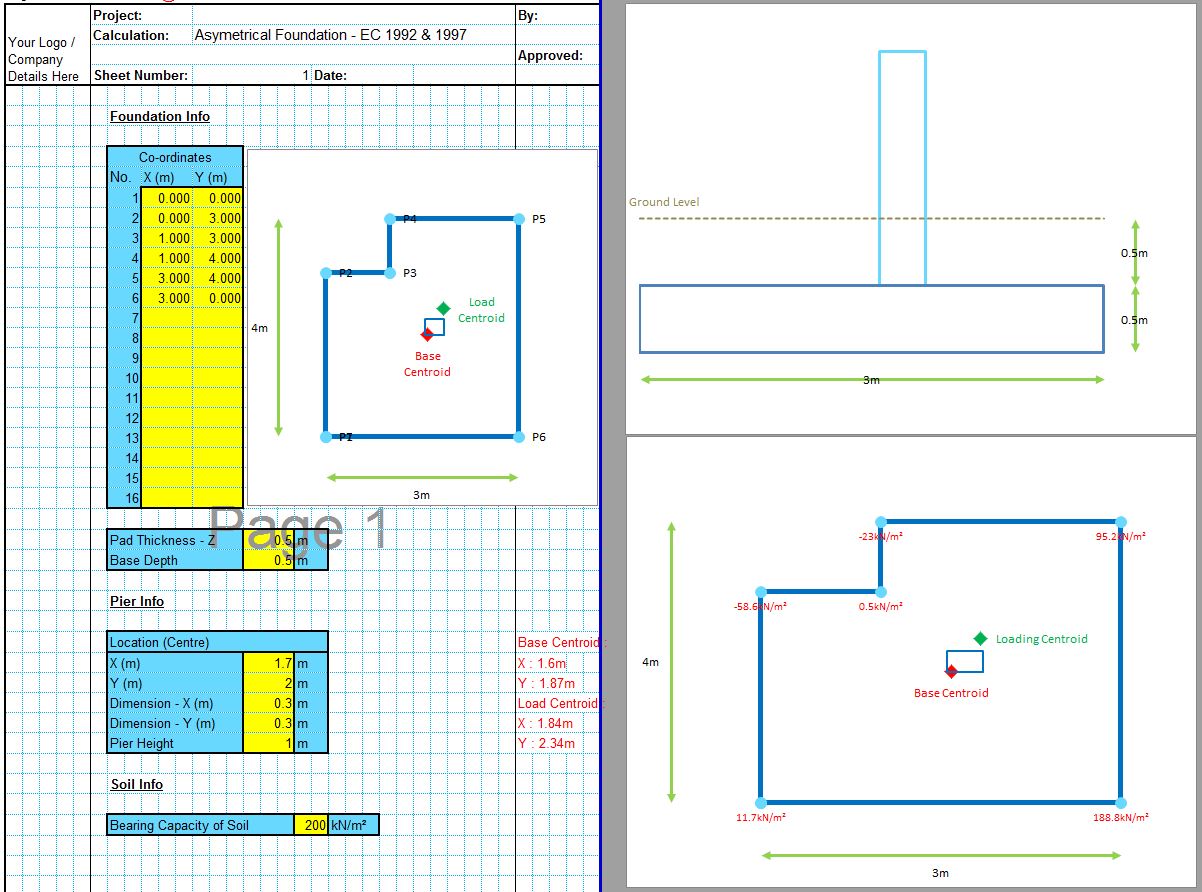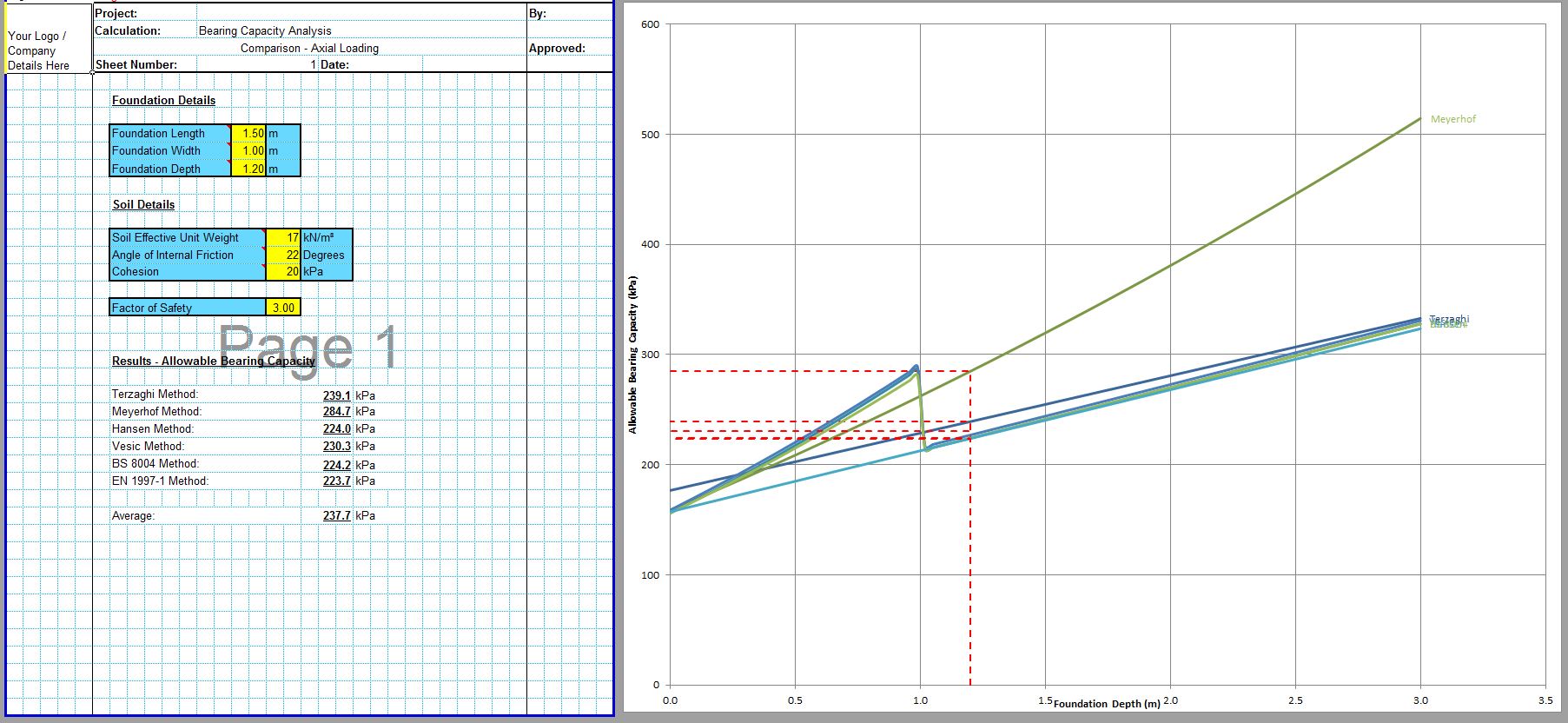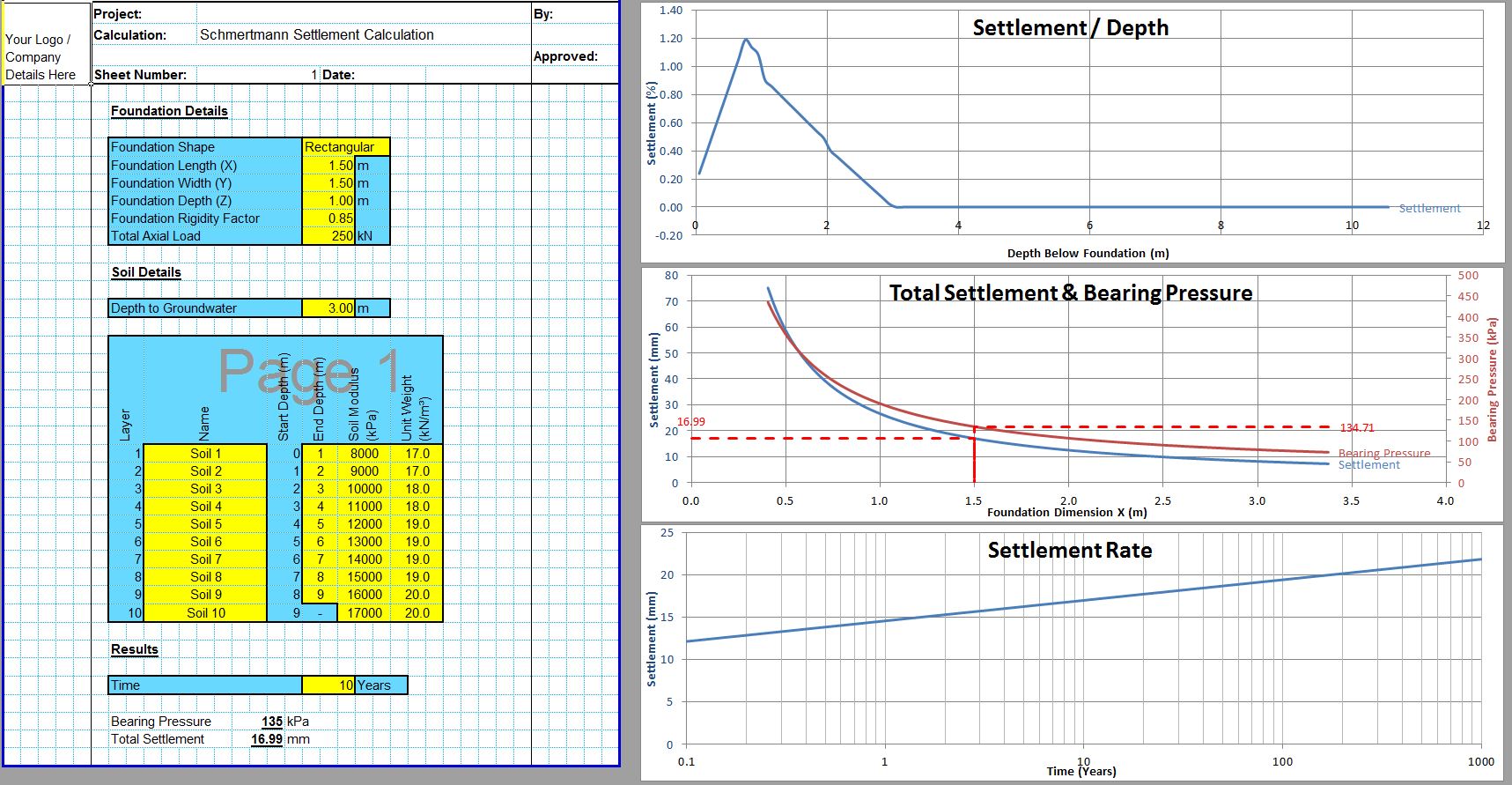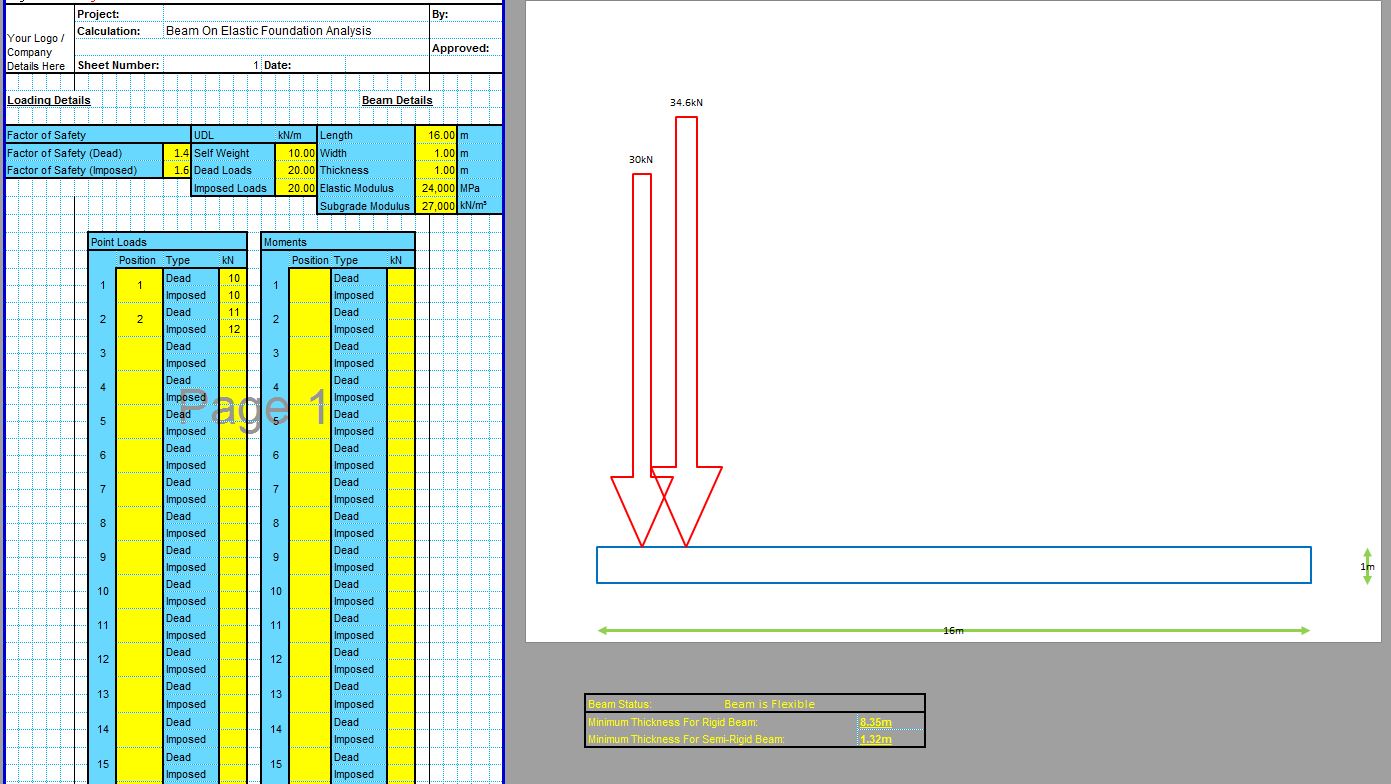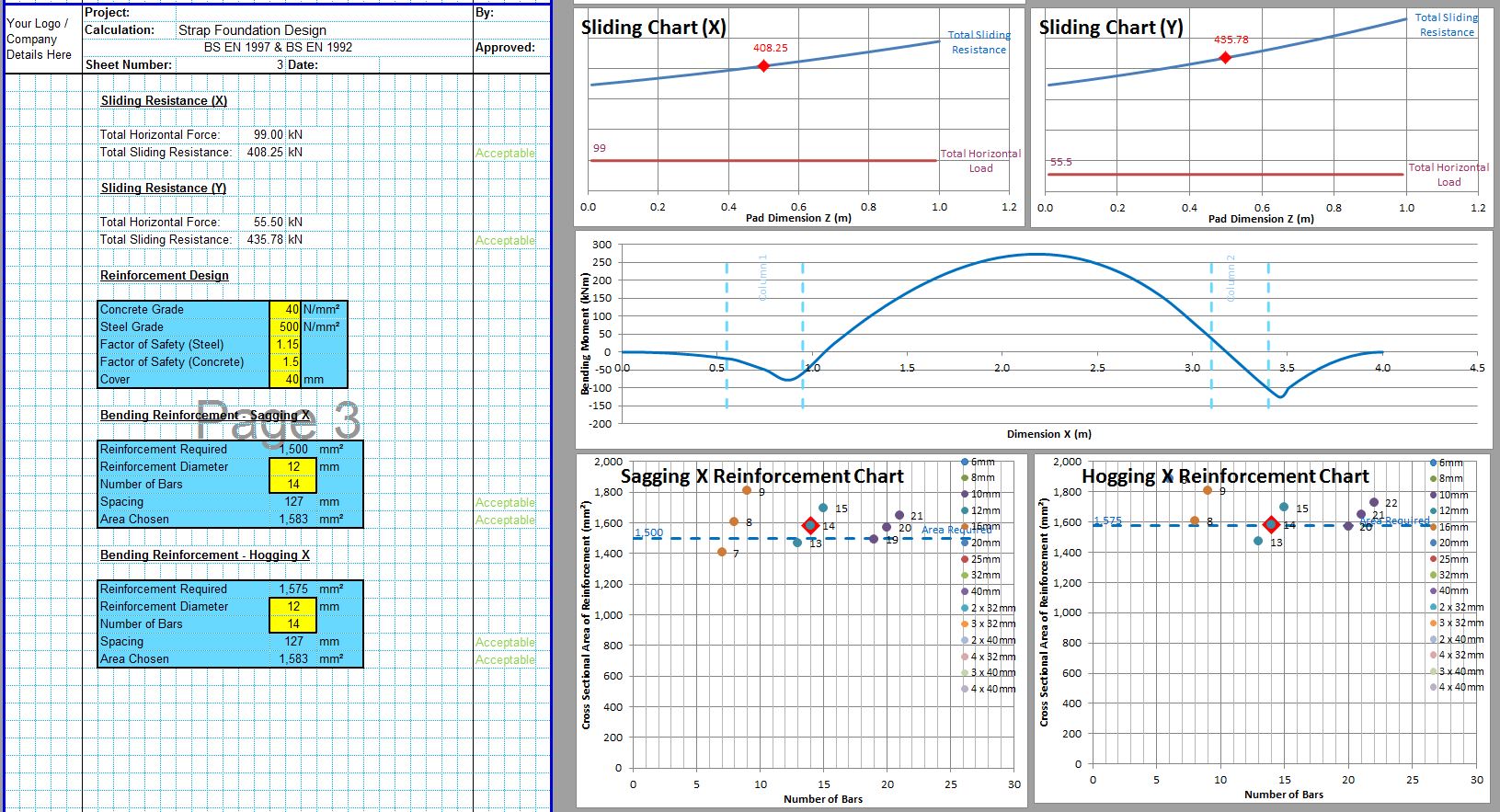It is possible to estimate a soil's bearing capacity from a plate load test using a procedure outlined in BS 8004. The easy to use spreadsheet estimates the soil settlement from the results of a plate bearing test. This settlement can be used to determine the allowable bearing capacity by giving the designer the foundation width at which the maximum allowable settlement will occur, usually around 25mm.
The CivilWeb Bearing Capacity from Plate Load Test spreadsheet is included in the Soil Bearing Capacity from SI Info Spreadsheet Suite which can be purchased at the bottom of this page for just £10. Alternatively the full CivilWeb Soil Bearing Capacity Calculation Excel Suite including 9 different methods including the CPT data method can be purchased together for just £20.
Plate Load Test
The Plate Load Test is a common method of measuring the bearing capacity of soils insitu. This method is popular because it involves testing of the actual soils which takes into account any layering, groundwater effects or any other conditions which may be difficult to include in an analytical method. A plate bearing test bearing capacity can be calculated using the below procedure.
The Plate Loading Test involves a square or circular loading plate of a standard size which is loaded with either a gravity load or a reaction load applied by a hydraulic jack or similar. A pit is dug to enable the test to be undertaken on the soils which the foundation will sit on. This pit must be at least 5 times the width of the plate which will allow suitable failure places to form up to the bottom of the pit. The plate is loaded in increments with the load, time and settlement measured. This information can then be used to estimate the bearing capacity of the soil. The Plate Load Test procedure is described in BS EN 1997-1, ASTM D-1194, ASTM D-1195 and ASTM D-1196. A typical Plate Load Test arrangement is shown on the next page.
Bearing Capacity from Plate Load Tests
Care must be taken when extrapolating the results of Plate Load Test for bearing capacity of the soil from small plates to wide foundations. Wide foundations will affect a much larger area of soils than a small plate which can lead to inaccuracies, particularly in heterogeneous soils. There is also the effect of overburden which causes the deeper soils to exhibit stiffer properties than shallower soils. This means that a full size footing will likely include these stiffer soils in its zone of influence, increasing the safe bearing capacity compared to the shallower soils used for the test. This effect is illustrated in the below diagram. The opposite effect can also occur where a small weak pocket of soil close to the surface will have a significant effect on the Plate Loading Test results but will not affect the full size foundation.
A plate load test for soil bearing capacity lasting a few days will also not take account of long term consolidation settlement. For these reasons the extrapolation of plate load test results to full scale foundations can be unreliable in some conditions.
Plate Load Test Equations
A number of equations have been proposed relating Plate Loading Test results to bearing capacity for full size foundations. The first suggested by Terzaghi and Peck is still the most commonly used today. This equation converts the settlement of the plate during the test with the expected settlement of the full size foundation. This uses the following equatioins where Sf is the estimated foundation settlement, Sp is the plate settlement, B is the foundation width and Bp is the plate width or diameter.
This equation is for granular soils. A separate equation below is used for clay soils.
As long as the estimated full size foundation settlement is below the allowable settlement, then the bearing pressure used during the test is adequate. This involves a bit of estimation in order to use a suitable bearing pressure for the test since the size of the foundation is not yet known. However it is usually possible to use a reasonable estimate for the bearing pressure which will give an acceptable result. If the initial result is significantly higher or lower than expected, a second test can be done with an amended bearing pressure.
Limitations
There are a number of limitations with this method as discussed above. For this reason it is not recommended that the results of Plate Loading Tests are used alone to determine bearing capacities. The test can be useful as an insitu test to check a presumptive or calculated bearing pressure is suitable.
CivilWeb Bearing Capacity from Plate Load Test Spreadsheet
The CivilWeb Bearing Capacity from Plate Load Test Spreadsheet allows the designer to estimate the maximum allowable bearing capacity of a soil from the results of a plate bearing test. This spreadsheet is included in the Soil Bearing Capacity from SI Info Spreadsheet Suite which includes methods of estimating the bearing capacity of soils from either plate load test data, SPT data or CPT data.
Buy the Soil Bearing Capacity from SI Info Spreadsheet Suite now for only £10.
Purchase the full Soil Bearing Capacity Calculation Spreadsheet Suite including 9 different methods for only £20.
Or buy our best value bundle, the full Foundation Design Suite including all 12 of our foundation design spreadsheets at a discount of 80%.
Download Free Trial Version
To try out a fully functional free trail version of this software, please enter your email address below to sign up to our newsletter.
Other Foundation Design Spreadsheets;
Foundation Design Spreadsheet Suite
Our full Foundation Design Suite includes all 12 of our foundation design spreadsheets for only £50 (80% discount).
